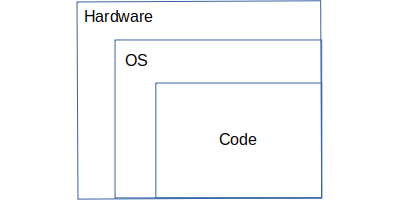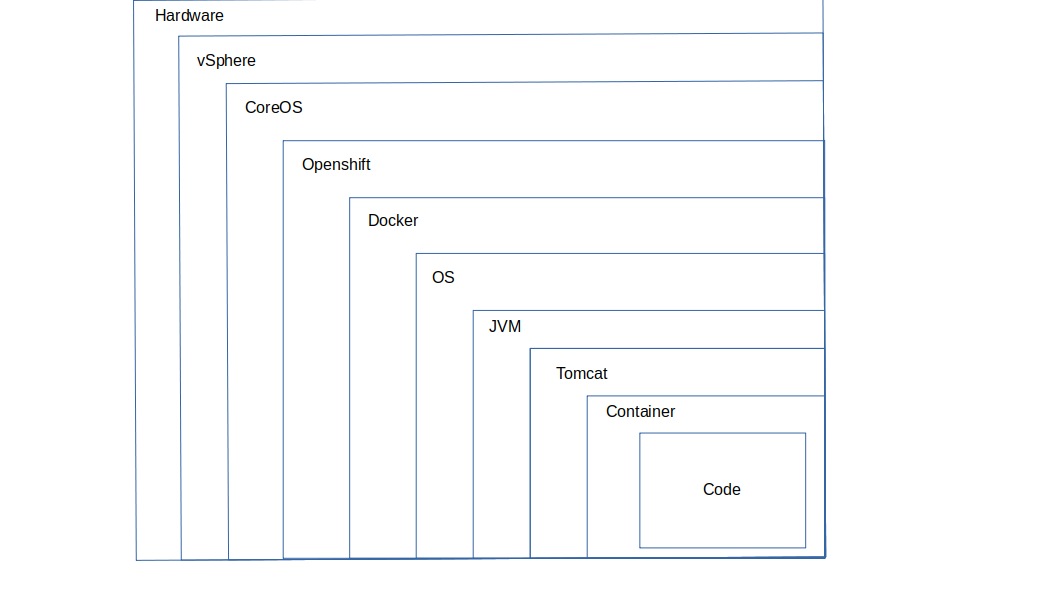https://www.kuketz-blog.de/kommentar-datenschutz-bei-microsoft-teams/
Single Page App in Rust
“WebAssembly (wasm) allows code written in languages other than JavaScript to run on browsers. If you haven’t been paying attention, all the major browsers support wasm and globally more than 90% of users have browsers that can run wasm.
Since Rust compiles to wasm, is it possible to build SPAs (Single Page Applications) purely in Rust and without writing a single line of JavaScript? The short answer is YES!” …
http://www.sheshbabu.com/posts/rust-wasm-yew-single-page-application/
Thunderbird 78
What Is a Monad? Basic Theory for a Java Developer
Misappropriated REST Dissertations
https://twobithistory.org/2020/06/28/rest.html
Simply call it HTTP-API. If you say REST most people will understand HTTP-API. It is just everyday language.
Learning JSF – The JSF Lifecycle
1. There is only one user interaction – it is called “the Request”. Please forget about GET,POST,PUT,DELETE. It is just “the request”. The request in general is not of your concern. Everything is handled by the framework. You don’t have to write controller code. In fact, you can not! The controller is already there. It is called “FacesServlet”.
2. The Framework handles all aspects of HTTP with “the request lifecycle”.
3. You have to learn the request lifecycle.
The Request Lifecycle
- User Request goes in.
- FacesServlet (Controller) asks the Facelet(View) to build the view
- The Facelet asks the BackingBean (Model) to provide data, e.g. from database.
- For that the BackingBean often uses additional Beans.
- The Facelet does a “Restore View“. Now the View is up to date. But…. only internally. Nothing is rendered yet because…
- Now the “Apply Request Values” phase is entered. For that more data is fetched from the BackingBean. The Request Values are applied. And an “ActionEvent” is queued.
- Get data from BackingBean to “Process Validations“
- Now a “ValueChangeEvent” is queued. This tells the FacesServlet that something has happend. Please notice, that the Servlet was the thing that originally startet the “postback request”.
- FacesServlet. Eventually invokes ValueChangeEvent at the Backing Bean. But wait, first it fetches again the old version of the BackingBean compares it to the new version, and only if changes where detected the “ValueChangeEvent” is sent.
- Now – tada – “Update Model Values” in the Facelet.
- Which then sets the values to the BackingBean. This hopefully applies, and…
- now an “ActionEvent” is invoked by the framework – because something might have happended. This is the point where all sort of registered Listeners are informed and can start running…1,2,3 go!
- This also gets noticed by the BackingBean which is now used in a phase named “Obtain Navigation Outcome“. Sure, because after all – how in the world should the controller know what view to render next? No, it is not determined by the controller endpoint, it is determined by a String that is send after each action in the BackingBean. Hopefully the String points to an existing xhtml page (Facelet)! What should go wrong? Now everything is prepared and….
- “Render Response” is done by the Facelet – No not the one you invoked inititally but the one that referenced by the last action of the BackingBean.
- “Generate HTML output” is sent to FacesServlet
- Response is send the user.
Advantages
- You can hook additional Beans into every phase and register listeners to the emitted events. This makes the framework very powerful and flexible.
- The whole thing works heavily with Dependency Injection. You can easily provide different implementations for different contexts. This is especially useful for testing purposes and provides a mechanism to reuse components in different scenarios.
- You can completely focus on the framework. You don’t have to care about working directly with HTTP or the database. Therefore the application can interact in different scenarios. Components can be reused.
Disadvantages
- It is not possible to create a standard HTTP based webapp with the framework.
- You won’t get citeable and stable URLs. There is only one hard implemented controller endpoint that handles all requests.
- It is almost not possible to create an app that stays stateless. The result is an application that almost always depends on a server session. This makes the framework susceptible for polluted sessions, dangling sessions and is by principle not thread safe. Programmers really have to take care.
- The navigation concept is a real mess. It is implicit, not safe and from client perspective unpredictable.
- It is hard to google. Since JSF can be combined with different implementations CDI, EJB, JPA
Keep-It-Simple Paradoxon
oi 0.3.0 released
oi 0.3.0 comes with enhanced XML support.
Oxford Common File Layout (OCFL)
This Oxford Common File Layout (OCFL) specification describes an application-independent approach to the storage of digital information in a structured, transparent, and predictable manner. It is designed to promote long-term object management best practices within digital repositories.
Specifically, the benefits of the OCFL include:
- Completeness, so that a repository can be rebuilt from the files it stores
- Parsability, both by humans and machines, to ensure content can be understood in the absence of original software
- Robustness against errors, corruption, and migration between storage technologies
- Versioning, so repositories can make changes to objects allowing their history to persist
- Storage diversity, to ensure content can be stored on diverse storage infrastructures including conventional filesystems and cloud object stores
How Computers Compute…
The Sci-Hub Effect: Sci-Hub downloads lead to more article citations
AsciiDoc Language Submitted to Eclipse Foundation
Video des Tages …
… von dr0id
Verfahrensfehler beim Bebauungsverfahren Gleueler Wiese?
“Gegen den geplante Ausbau des „Geißbockheims“ und die Zerstörung der Wiese durch den FC will die Bürgerinitiative „Grüngürtel für alle“ und viele mehr vor dem Oberverwaltungsgericht Münster klagen. Die GRÜNEN unterstützen diese Klage, zumal ein von ihnen beauftragtes Rechtgutachten zum Schluss kommt, dass die Planung aus vielfältigen Gründen rechtsfehlerhaft ist. ”
Der Lieblingsort der Kölner:innen ist….
A Load Testing Tool
European Solidarity Tracker
Software that lasts
Digital Infrastructur and Open Source
Nearly all software today relies on free, public code (called “open source” code), written and maintained by communities of developers and other talent. Much like roads or bridges, which anyone can walk or drive on, open source code can be used by anyone—from companies to individuals—to build software. This type of code makes up the digital infrastructure of our society today.

